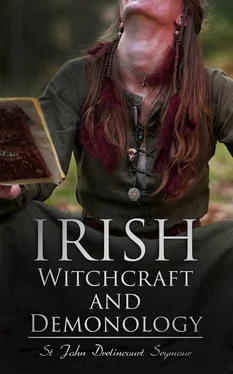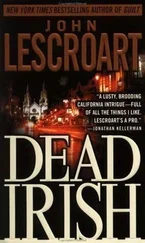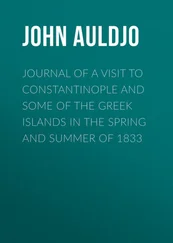St John Drelincourt Seymour - Irish Witchcraft and Demonology
Здесь есть возможность читать онлайн «St John Drelincourt Seymour - Irish Witchcraft and Demonology» — ознакомительный отрывок электронной книги совершенно бесплатно, а после прочтения отрывка купить полную версию. В некоторых случаях можно слушать аудио, скачать через торрент в формате fb2 и присутствует краткое содержание. Жанр: unrecognised, на английском языке. Описание произведения, (предисловие) а так же отзывы посетителей доступны на портале библиотеки ЛибКат.
- Название:Irish Witchcraft and Demonology
- Автор:
- Жанр:
- Год:неизвестен
- ISBN:нет данных
- Рейтинг книги:4 / 5. Голосов: 1
-
Избранное:Добавить в избранное
- Отзывы:
-
Ваша оценка:
- 80
- 1
- 2
- 3
- 4
- 5
Irish Witchcraft and Demonology: краткое содержание, описание и аннотация
Предлагаем к чтению аннотацию, описание, краткое содержание или предисловие (зависит от того, что написал сам автор книги «Irish Witchcraft and Demonology»). Если вы не нашли необходимую информацию о книге — напишите в комментариях, мы постараемся отыскать её.
Irish Witchcraft and Demonology — читать онлайн ознакомительный отрывок
Ниже представлен текст книги, разбитый по страницам. Система сохранения места последней прочитанной страницы, позволяет с удобством читать онлайн бесплатно книгу «Irish Witchcraft and Demonology», без необходимости каждый раз заново искать на чём Вы остановились. Поставьте закладку, и сможете в любой момент перейти на страницу, на которой закончили чтение.
Интервал:
Закладка:
De Ledrede had been arrested by Le Poer’s orders in Lent, in the year 1324. On Monday following the octave of Easter the Seneschal held his court in Kilkenny, to which entrance was denied the Bishop; but the latter, fully robed, and carrying the Sacrament in a golden vase, made his way into the court-room, and “ascending the tribunal, and reverently elevating the Body of Christ, sought from the Seneschal, Justiciary, and Bailiffs that a hearing should be granted to him.” The scene between the two was extraordinary; it is too lengthy to insert, and does not bear to be condensed—suffice it to say that the Seneschal alluded to the Bishop as “that vile, rustic, interloping monk (trutannus), with his dirt (hordys) which he is carrying in his hands,” and refused to hear his arguments, or to afford him any assistance.
Though we have lost sight for a while of Dame Alice, yet she seems to have been eagerly watching the trend of events, for now we find her having the Bishop summoned to Dublin to answer for having excommunicated her, uncited, unadmonished, and unconvicted of the crime of sorcery. He attended accordingly, and found the King’s and the Archbishop’s courts against him to a man, but the upshot of the matter was that the Bishop won the day; Sir Arnold was humbled, and sought his pardon for the wrongs he had done him. This was granted, and in the presence of the council and the assembled prelates they mutually gave each other the kiss of peace.
Affairs having come to such a satisfactory conclusion the Bishop had leisure to turn his attention to the business that had unavoidably been laid aside for some little time. He directed letters patent, praying the Chancellor to seize the said Alice Kyteler, and also directed the Vicar-General of the Archbishop of Dublin to cite her to respond on a certain day in Kilkenny before the Bishop. But the bird escaped again out of the hand of the fowler. Dame Alice fled a second time, on this occasion from Dublin, where she had been living, and (it is said) made her way to England, where she spent the remainder of her days unmolested. Several of her confederates were subsequently arrested, some of them being apparently in a very humble condition of life, and were committed to prison. Their names were: Robert of Bristol, a clerk, John Galrussyn, Ellen Galrussyn, Syssok Galrussyn, William Payn de Boly, Petronilla of Meath, her daughter Sarah,5 Alice the wife of Henry Faber, Annota Lange, and Eva de Brownestown. When the Bishop arrived in Kilkenny from Dublin he went direct to the prison, and interviewed the unfortunates mentioned above. They all immediately confessed to the charges laid against them, and even went to the length of admitting other crimes of which no mention had been made; but, according to them, Dame Alice was the mother and mistress of them all. Upon this the Bishop wrote letters on the 6th of June to the Chancellor, and to the Treasurer, Walter de Islep, requesting them to order the Sheriff to attach the bodies of these people and put them in safe keeping. But a warrant was refused, owing to the fact that William Outlawe was a relation of the one and a close friend of the other; so at length the Bishop obtained it through the Justiciary, who also consented to deal with the case when he came to Kilkenny.
Before his arrival the Bishop summoned William Outlawe to answer in S. Mary’s Church. The latter appeared before him, accompanied by a band of men armed to the teeth; but in no way overawed by this show of force, De Ledrede formally accused him of heresy, of favouring, receiving, and defending heretics, as well as of usury, perjury, adultery, clericide, and excommunications—in all thirty-four items were brought forward against him, and he was permitted to respond on the arrival of the Justiciary. When the latter reached Kilkenny, accompanied by the Chancellor, the Treasurer, and the King’s Council, the Bishop in their presence recited the charges against Dame Alice, and with the common consent of the lawyers present declared her to be a sorceress, magician, and heretic, and demanded that she should be handed over to the secular arm and have her goods and chattels confiscated as well. Judging from Friar Clyn’s note this took place on the 2nd of July. On the same day the Bishop caused a great fire to be lit in the middle of the town in which he burnt the sackful of magical stock-in-trade, consisting of powders, ointments, human nails, hair, herbs, worms, and other abominations, which the reader will remember he had received from Sir John le Poer at an early stage in the proceedings.
Further trouble arose with William Outlawe, who was backed by the Chancellor and Treasurer, but the Bishop finally succeeded in beating him, and compelled him to submit on his bended knees. By way of penance he was ordered to hear at least three masses every day for the space of a year, to feed a certain number of poor people, and to cover with lead the chancel of S. Canice’s Cathedral from the belfry eastward, as well as the Chapel of the Blessed Virgin. He thankfully agreed to do this, but subsequently refused to fulfil his obligations, and was thereupon cast into prison.
What was the fate of Dame Alice’s accomplices, whose names we have given above, is not specifically recorded, except in one particular instance. One of them, Petronilla of Meath, was made the scapegoat for her mistress. The Bishop had her flogged six times, and under the repeated application of this form of torture she made the required confession of magical practices. She admitted the denial of her faith and the sacrificing to Robert, son of Art, and as well that she had caused certain women of her acquaintance to appear as if they had goats’ horns. She also confessed that at the suggestion of Dame Alice she had frequently consulted demons and received responses from them, and that she had acted as a “medium” (mediatrix) between her and the said Robert. She declared that although she herself was mistress of the Black Art, yet she was as nothing in comparison with the Dame from whom she had learnt all her knowledge, and that there was no one in the world more skilful than she. She also stated that William Outlawe deserved death as much as she, for he was privy to their sorceries, and for a year and a day had worn the devil’s girdle6 round his body. When rifling Dame Alice’s house there was found “a wafer of sacramental bread, having the devil’s name stamped thereon instead of Jesus Christ, and a pipe of ointment wherewith she greased a staffe, upon which she ambled and galloped through thicke and thin, when and in what manner she listed.” Petronilla was accordingly condemned to be burnt alive, and the execution of this sentence took place with all due solemnity in Kilkenny on 3rd November 1324, which according to Clyn fell on a Sunday. This was the first instance of the punishment of death by fire being inflicted in Ireland for heresy.
Whether or not Petronilla’s fellow-prisoners were punished is not clear, but the words of the anonymous narrator show us that the burning of that unfortunate wretch was rather the beginning than the end of persecution—that in fact numerous other suspected persons were followed up, some of whom shared her terrible fate, while to others milder forms of punishment were meted out, no doubt in proportion to their guilt. He says: “With regard to the other heretics and sorcerers who belonged to the pestilential society of Robin, son of Art, the order of law being preserved, some of them were publicly burnt to death; others, confessing their crimes in the presence of all the people, in an upper garment, are marked back and front with a cross after they had abjured their heresy, as is the custom; others were solemnly whipped through the town and the market-place; others were banished from the city and diocese; others who evaded the jurisdiction of the Church were excommunicated; while others again fled in fear and were never heard of after. And thus, by the authority of Holy Mother Church, and by the special grace of God, that most foul brood was scattered and destroyed.”
Читать дальшеИнтервал:
Закладка:
Похожие книги на «Irish Witchcraft and Demonology»
Представляем Вашему вниманию похожие книги на «Irish Witchcraft and Demonology» списком для выбора. Мы отобрали схожую по названию и смыслу литературу в надежде предоставить читателям больше вариантов отыскать новые, интересные, ещё непрочитанные произведения.
Обсуждение, отзывы о книге «Irish Witchcraft and Demonology» и просто собственные мнения читателей. Оставьте ваши комментарии, напишите, что Вы думаете о произведении, его смысле или главных героях. Укажите что конкретно понравилось, а что нет, и почему Вы так считаете.












